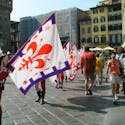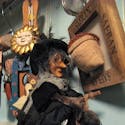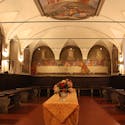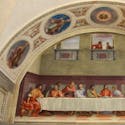The exhibition dedicated to the great French artist was a great success and Florence once again became capital of international culture.
Held from March 2 to July 29, 2007 in the wonderful Palazzo Strozzi, the exhibition attracted thousands of visitors. It was planned and organized by Dr. Francesca Bardazzi and Dr. Carlo Sisi, both famous experts of Nineteenth-Century art movements.
The exhibition was also a good occasion to think about Florentine cultural and artistic circles during the late Nineteenth Century, when Florence was characterized by innovation and experimentation.
That time is closely related to two very important men who lived in the city and who gave a strong contribution to art history with their collections: Egisto Paolo Fabbri Jr. and Charles Alexander Loeser. Both were Americans and wealthy. Fabbri was born to an Italian family and Loeser was of German origins. The two young men were often in Paris and moved in bohemian circles where they met intellectuals and artists. In the French capital, they discovered the works of Paul Cézanne, until that time completely ignored by critics.
The great master was born in southern France, in the beautiful city of Aix, surrounded by those lavender fields Provence is famous for. In contrast with his father's wish for him to become a lawyer, Paul starts to paint and moves to Paris encouraged by one of his closest friends, the writer Emile Zola. With another friend, the painter Camille Pisarro, Cézanne approaches Impressionism, though with his own personal style that often moved away from it. However, in Paris his art is not understood at all and not appreciated at that point. Disappointed and excluded from the art circles, Paul starts to lead a secluded life and finally goes back to Provence. Over the years, his artistic research becomes more and more experimental till he almost pioneers Cubism. He dies in Aix, his hometown, on October 22, 1906.
Ten years before, the two collectors Fabbri and Loeser had bought some of his paintings, proving to believe in the artist rejected by critics. Their courageous choice would lead later to the acceptance of the master by art critics and the understanding of his importance in the context of contemporary art movements. Both gave an important contribution to the promotion of Cézanne's work.
The exhibition therefore paid homage not only to the great French artist, but consequently also necessarily to the figures of the two collectors who fell in love with his art and who were the main architects of his critical fortune.





